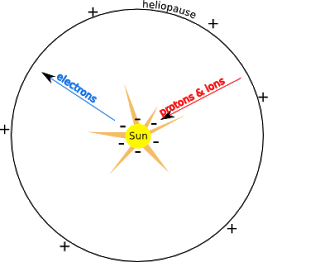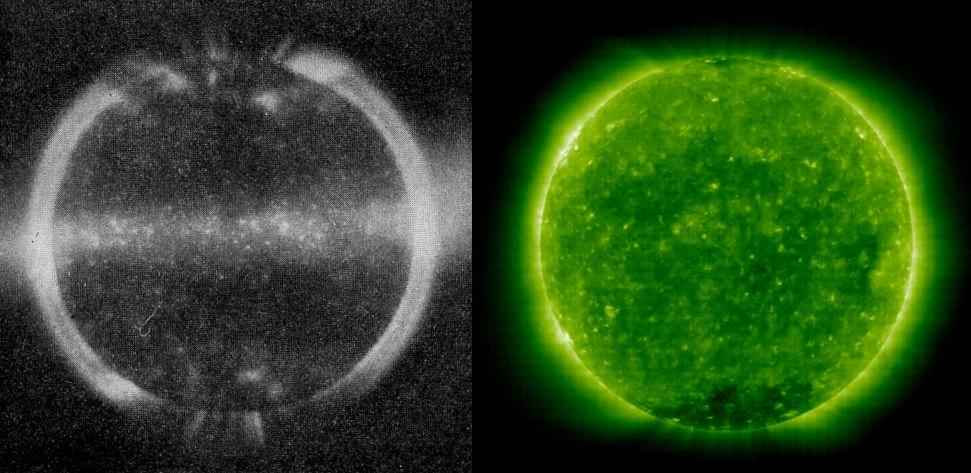Right, and you promote Birkeland's and/or Alfven's over Juergen's.
I'd rank them Birkeland, Alfven, Juergen's in exactly that order. I think Birkeland actually got it right from the start, since it best jives with the SDO and IRIS imagery.
But even though the star would be the source of the energy required, is should be possible to produce calculations for the expected energy requirement for the star.
Sure, but it's exactly the same calculation as the standard model, and it only needs to 'power the single sun' from the inside out. No additional or *excess* energy needs to go into the connecting circuits to power anything else. It's just like the standard model in that respect. Each sun is still it's own energy source, and the circuits between them do not *need* to carry any specific amount of current. The circuits will of course carry away any *excess* energy, but unlike in Juergen's scenario, the circuity doesn't need to supply all the power to every sun.
Juergen's model effectively turns galaxies into 'light bulb filaments' that have to be powered externally just like an ordinary incandescent bulb. The power requirements to power billions of stars would be *enormous*, even if *some* of the power is generated locally. This would require *incredible* currents to flow into the galaxy on a continuous basis.
Birkeland's model (Alfven's too) turns every sun into a mini generator, and they simply 'share' excess energy through various circuitry. In that case the circuits don't have to carry anywhere near as much current, and really we're talking circuits that carry *extra* energy that is produced in each galaxy. The circuits don't have to carry anywhere near as much current in that case.
You could even go from the other way, calculating what would be the energy requirement for any given "gigantic circuit" (no matter the source).
In Juergen's model that's true. In Birkeland's model or Alfven's model all that tells you is the same thing that number tells you in the *standard* model. It doesn't say a peep about any external circuit energy.
Am I to interpret this as the problem is that the gigantic circuits unknown density is the problem?
So given that the models themselves (with the exception of the Jeurgen model) do not predict the circuit density, shouldn't it be possible to observe the density somehow?
Sure. We can observe the current flow by observing the magnetic field strengths and extrapolating backwards using Maxwell's equations.
Or just make an analysis where the density is variable?
The key here is that the density of the current in any internally powered solar model scenario is *necessarily* going to be less than a Juergen's scenario where each sun has to be powered *through the circuitry*.
So out of your preferred two models only one makes predictions about the energy?
Actually, all you could hope to *predict* (postdict of course) is the total energy output of the sun itself. That's typically done by postdicting a fit to observed energy levels on Earth. The mainstream model really doesn't much deal with the solar wind energy. It's typically derived strictly from the amount of light and/or heat that reaches Earth.
I don't know. You know I don't.
But how is that relevant?
Any other model is irrelevant (as each model stand on its own merit), we have the three models you've proposed (though you've kind of dismissed one of them).
I basically dismiss the concept of an external power source for suns. While they may *share* energy to a degree, I see each sun as it's own mini generator that produces most of it's own energy locally.
The question was:
Why is it not possible to produce a calculation for the gigantic circuit?
Unlike in Juergen's light bulb scenario, there is no way to calculate a *minimum* necessary current to flow through the circuitry in an *internally* powered solar model scenario. It wouldn't be possible to calculate such a number based on the standard solar model. It's therefore necessarily impossible to do so for Alfven's "electric sun" model (effectively the standard model), and it's likewise impossible to calculate it for *any* internally powered model, including Birkeland's cathode sun model.
The closest you *might* get in Birkeland's cathode sun scenario is to work backwards from the solar wind speeds and densities, and use Birkeland's figures about voltages and try to work from that. I suppose that it's *maybe possible* to do it, but it still wouldn't tell how much of that current *must* flow through the jets near the core of the galaxy. The best it might do it tell you the current density locally (inside our solar system itself), which is likely to be a *relatively* small number at Earth, but at least enough to power the aurora.
I think you may be hinting at something here that I've misunderstood.
You're writing as if the structure (gigantic circuit) itself wasn't what you were referring to, as the object that would need energy to maintain.
Are you actually talking about a current going through the structure?
Yes, and so was Peratt, and therefore so is Bridgman.
I've been writing about the former, not the latter.
Ah. Therein lies the confusion.

I.e. I haven't even though about any current. I was asking about the gigantic circuit itself.
My assumption was:
Those gigantic circuits require energy to maintain.
Not:
Those gigantic circuits current require energy to maintain.
It's really a question of how much total current must flow through the circuitry. The circuitry is clearly there. We can see Birkeland currents form around the poles of 'black holes' in the center of various galaxies. We see them form around star clusters and every galaxy clusters as well. There's no doubt they exist.
The issue is one of *total energy* that has to pass through the circuitry on a *constant* basis. An externally powered "light bulb" scenario would indeed require that circuitry carry *all* the energy (or a large part of that energy) through the various circuits. Any *internally* powered solar model will not requires *as much* current to flow through the circuits.
Peratt's expectations about microwave energy was directly related to an *externally* powered scenario, and therefore it predicts *more* current will flow through that same circuitry than any internal powered model would predict.
That doesn't really sound like what you would allow for in any other theory (to be a little provocative).
Actually I'm giving the standard model a pass too, just like any other internally powered model. I'm not imposing any expectations on the current density of the circuitry in a standard solar model scenario, so why would I do that with any other internally powered solar model? I can't impose *greater* standards on EU/PC models.
So, to summarize it a bit:
"Those three models have predicted these gigantic circuits, but we don't know how much energy they require."
I"m not sure which three you mean. The standard model, Alfven's model and Birkeland's model impose no specific requirement on the current density of the circuitry. The Juergen's model is the only one that does make such a requirement.
Bridgman's criticism *do* apply to a Juergen's model, but they *do not* apply to a Birkeland model, or to Alfven's 'electric sun' model. Bridgman however simply lumps them into *one thing* that he personally calls "Electric Universe" theory, and then he claims to falsify the whole of electric universe theory based on his criticisms about *one* specific solar model.
Bridgman isn't even apparently *aware* of the fact that there are *multiple* solar models to choose from in "electric universe theory", let alone their implications as it relates to various predictions about microwave emissions from various circuits.

Juergen's sounds as if we have a lot of consumers but no producer, I think (since you don't seem to like it anyway) we can skip that one and just go with the Alfven and Birkeland models.
You got it. Juergen's model treats all suns like ordinary light bulbs in your house. They are *consumers* of energy, and they have to be *powered* by some *undefined* external energy source. I have no idea what Juergen's even intended to suggest *was* the actual energy source.
Alfven's "electric sun" model is based *directly* upon the standard solar model in terms of energy production, and therefore it is it's own *generator* of electrical energy. Nothing has to flow through the circuits to produce the power, just the excess power will flow through various circuits. Birkeland's model is the same in the sense that he predicted the sun itself was the generator of the power. Birkeland didn't quite know how to describe it in modern terms. He simply used the term "transmutation of elements". In that scenario, as in the standard model scenario, no external circuit energy is *required* to power the sun, nor to power every sun of every galaxy.
Juergen's model does impose additional power requirements on the system. It's the only possible 'electric sun' model that could be falsified by Bridgman's criticisms.
What I "resent" is the fact that Bridgman *oversimplifies* the problem, and oversimplifies the meaning of "electric universe" theory. He's creating his own very *limited strawman* version of 'electric universe' theory and burning it. His ignorance of cathode sun theory is then passed directly on to others that happen to 'trust' his claims. That's annoying as pagan hades IMO.



 !
!